ORIGAMI ANYWHERE
ORIGAMI ANYWHERE
Why Throw It Out When You Can
Fold It Up?
Nick Robinson
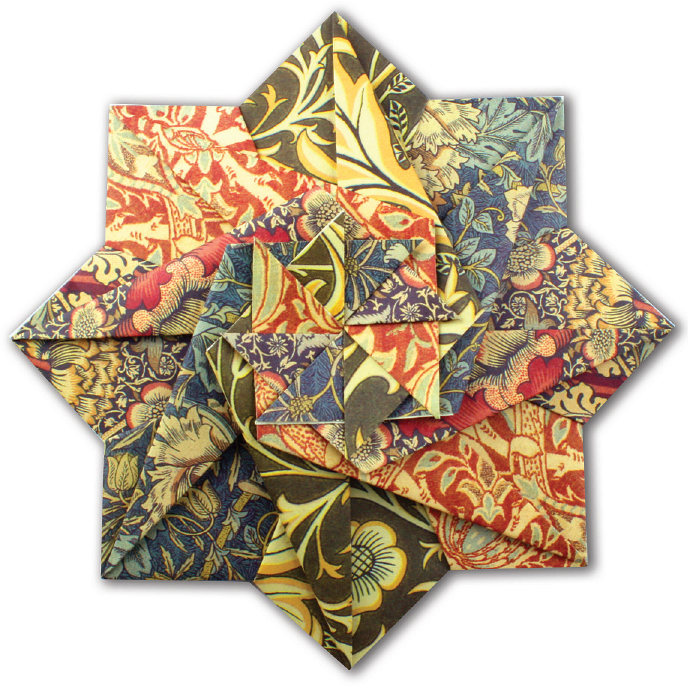
Dover Publications, Inc.
Mineola, New York
The author would like to thank the following creators for kindly allowing their work to be used within this book; Roast Chicken - Arun Soor / 3D Heart, Autumn Leaf - David Petty / Mehlem Envelope - Doris Lauinger / Dog, Koala - Edwin Corrie / Flower - Evi Binzinger / Hex-Letterfold, Rocking Cradle, XYZ - Francis Ow / Wizard - Kunihiko Kasahara / Fox - Mark Leonard / Double Pajarita, Pill Box, Throne, Octaring - Nick Robinson / Saltstraumen Octahedron, Shell Cube - Robert Foord / Decoration - Steve Daniels / Dachshund - Susanna Kricskovics / Bellflower, Jumping Frog, Fleur De Lys, Printers Hat, Shirt, Slippers - Traditional / Brown Box, Yacht - Wayne Brown
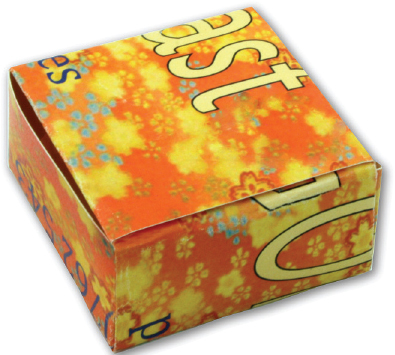
With any origami design, there is a chance that similar designs have been independently created by others, but the models have been credited to the best of my knowledge.

Thanks to: Jason Schneider, Marie Zaczkiewicz, Jim Miller and Peter Donahue at Dover Publications for their support and professionalism. To Wayne Brown for proof-reading the diagrams. To OUSA for helping me gather folding material whilst in New York. To the British Origami Society for support and inspiration. To my many origami friends around the world for their boundless friendship.
To Rachel and the Riffs for musical fun. To Andy Peake, the other half of my group Lost Garden. Lastly, (but not leastly) Alison, my beautiful partner in lifes adventures, our children Nick and Daisy, plus moggies Matilda and Rhubarb. 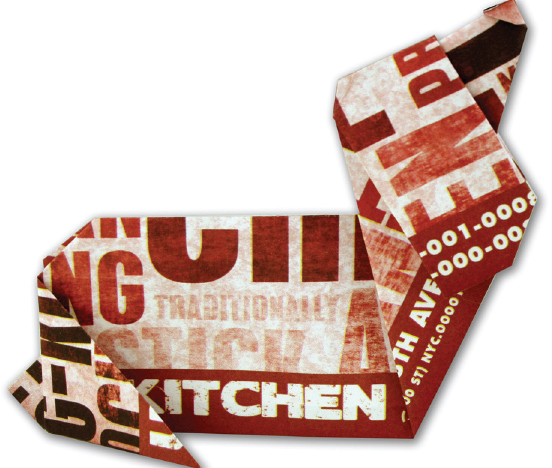 For further information about origami, please visit the authors website: www.origami.me.uk, Origami USA: www.origamiusa.org and the British Origami Society: www.britishorigami.info.
For further information about origami, please visit the authors website: www.origami.me.uk, Origami USA: www.origamiusa.org and the British Origami Society: www.britishorigami.info. 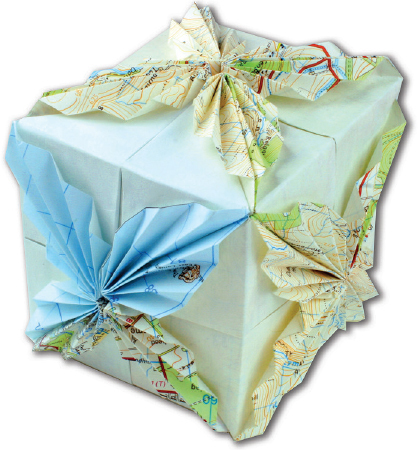 Copyright Copyright 2015 by Nick Robinson All rights reserved. International Standard Book NumbereISBN-13: 978-0-486-80392-0 Manufactured in the United States by Courier Corporation 79125401 2015 www.doverpublications.com
Copyright Copyright 2015 by Nick Robinson All rights reserved. International Standard Book NumbereISBN-13: 978-0-486-80392-0 Manufactured in the United States by Courier Corporation 79125401 2015 www.doverpublications.com
Contents
Introduction
Origami Anywhere is so called because it truly is a craft you can enjoy anywhere.
International Standard Book NumbereISBN-13: 978-0-486-80392-0 Manufactured in the United States by Courier Corporation 79125401 2015 www.doverpublications.com
Contents
Introduction
Origami Anywhere is so called because it truly is a craft you can enjoy anywhere.
No expensive tools are needed and the material-paper - is all around you. We are surrounded in our daily lives by many different types of paper; tickets, leaflets, bags, wrappers, newspapers, envelopes and many more. Almost all of these can be used to make origami models. 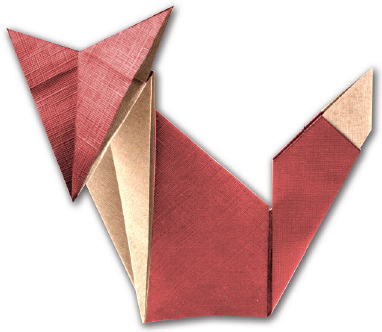 As you can imagine, some types of recycled material are easier to fold with than others, but with patience and enthusuiasm, most can be turned into delightful models to give to your friends, display on a shelf or share images of using the Internet.
As you can imagine, some types of recycled material are easier to fold with than others, but with patience and enthusuiasm, most can be turned into delightful models to give to your friends, display on a shelf or share images of using the Internet. 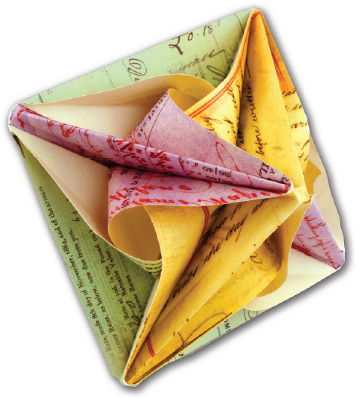 The beauty is that since the materials are free, you can practice until your skills are perfected, at no cost. Certain subjects will be suggested by different types of paper; dogs and rabbits, for instance, look great from brown paper bags.
The beauty is that since the materials are free, you can practice until your skills are perfected, at no cost. Certain subjects will be suggested by different types of paper; dogs and rabbits, for instance, look great from brown paper bags.
Brightly patterned paper might be more suitable for a peacock or a decorative cube. Some designs are better made with thicker paper, others with thin, flexible material. 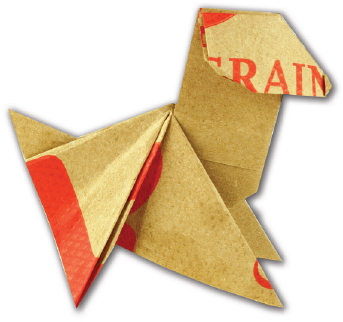
How to fold
People assume you need a lot of patience or talent to do origami. This is not the case. Anyone can make a simple model, given the right instructions. When you have completed this book, you can use your abilities to tackle more advanced designs, or to expand your range of simple subjects.
You will also find that making a model 3 or 4 times will fix the folding sequence in your memory and you may remember it for years! 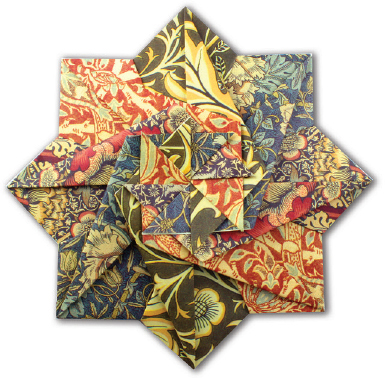 The key to good origami is to fold slowly, think about what you are doing and not to make the crease until you are sure the paper is in the right place. If it goes seriously wrong, just pop the paper in the nearest recycle bin and start again, no harm has been done. Make life easy for yourself by having a clean, uncluttered folding surface, with good lighting. Set aside plenty of time to work on your folding and try to avoid being disturbed. If you find a model is difficult to complete, try folding it with a small group of friends!
The key to good origami is to fold slowly, think about what you are doing and not to make the crease until you are sure the paper is in the right place. If it goes seriously wrong, just pop the paper in the nearest recycle bin and start again, no harm has been done. Make life easy for yourself by having a clean, uncluttered folding surface, with good lighting. Set aside plenty of time to work on your folding and try to avoid being disturbed. If you find a model is difficult to complete, try folding it with a small group of friends!
Working with recycled materials
Creating origami from scrap paper will require making some decisions. Not every model will suit every type of paper.
Here are some tips to think about.
Shape
Depending on the model, you may need to prepare your paper - some will need the removing of rough edges and irregular shapes will need trimming to the appropriate size. This may be a square, a 2x1 rectangle or possibly even a long, narrow strip, such as a chopsticks container.
Which side up?
Origami paper often has a colored and a white side, as shown in the diagrams. You will need to consider the two sides of the paper and choose the most attractive side for the outside of the model. If your model reveals both sides of the paper, which is the best choice?
Choosing material
Leaflets, letters, and flyers are pretty much ideal for most models, as long as they are not too thick.
Smaller sheets, such as tickets or tea bag wrappers may test your technique at first, but practice will make perfect. Napkins will work with some designs, but not others. Shiny plastic may need to be glued to a thin sheet of paper in order for the folds to stay in place. 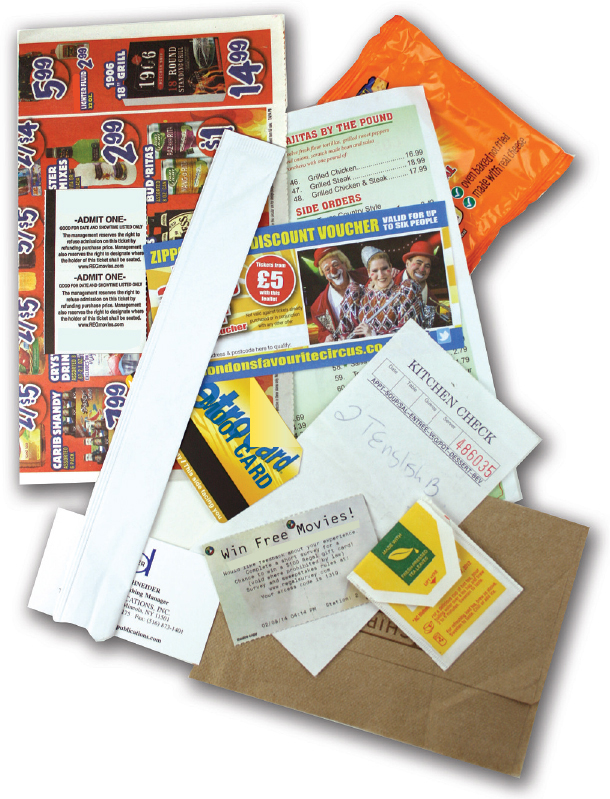 When you spot paper that may be foldable, do your best to keep it as clean as possible. Existing creases will make it a lot harder to fold the model.
When you spot paper that may be foldable, do your best to keep it as clean as possible. Existing creases will make it a lot harder to fold the model.
Progressing
The best way to learn, as with most things, is to practice.
Progressing
The best way to learn, as with most things, is to practice.
Fold any model you can, using the local library, bookshop and Internet to find new material. Why not start a local origami group? Its also a great idea to join a national origami society; they are all around the world!

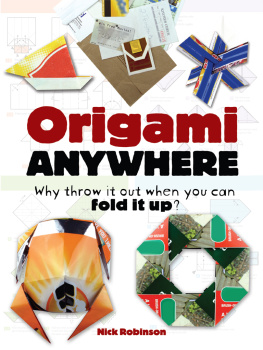
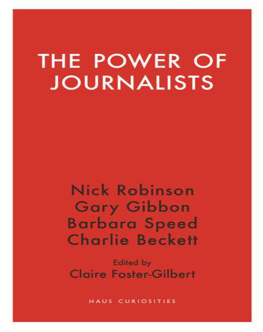
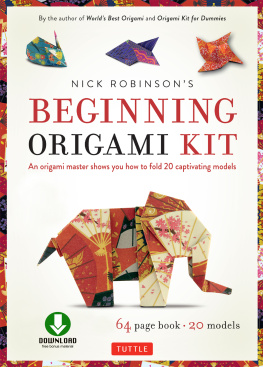
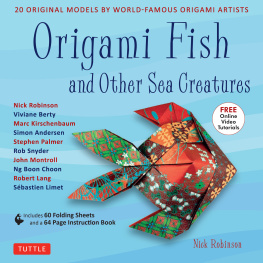
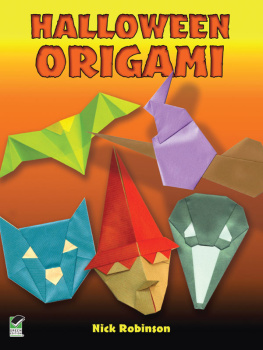

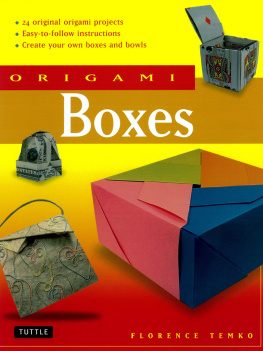


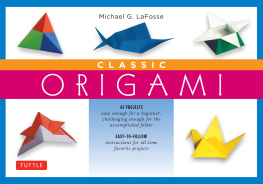
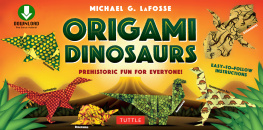
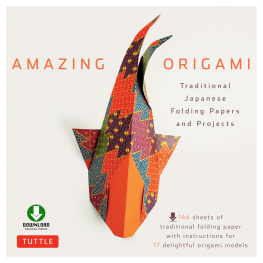
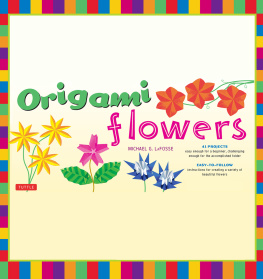
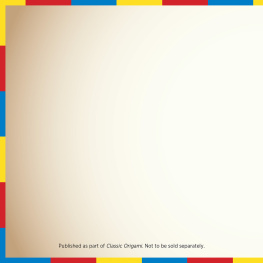
![Marcia Joy Miller - Origami for Busy People: 27 Original On-The-Go Projects [Origami Book, 48 Papers, 27 Projects]](/uploads/posts/book/151502/thumbs/marcia-joy-miller-origami-for-busy-people-27.jpg)

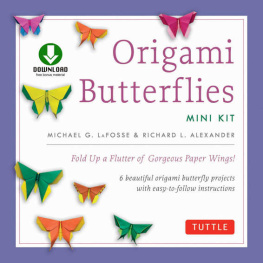

 With any origami design, there is a chance that similar designs have been independently created by others, but the models have been credited to the best of my knowledge.
With any origami design, there is a chance that similar designs have been independently created by others, but the models have been credited to the best of my knowledge.  Thanks to: Jason Schneider, Marie Zaczkiewicz, Jim Miller and Peter Donahue at Dover Publications for their support and professionalism. To Wayne Brown for proof-reading the diagrams. To OUSA for helping me gather folding material whilst in New York. To the British Origami Society for support and inspiration. To my many origami friends around the world for their boundless friendship.
Thanks to: Jason Schneider, Marie Zaczkiewicz, Jim Miller and Peter Donahue at Dover Publications for their support and professionalism. To Wayne Brown for proof-reading the diagrams. To OUSA for helping me gather folding material whilst in New York. To the British Origami Society for support and inspiration. To my many origami friends around the world for their boundless friendship.  For further information about origami, please visit the authors website: www.origami.me.uk, Origami USA: www.origamiusa.org and the British Origami Society: www.britishorigami.info.
For further information about origami, please visit the authors website: www.origami.me.uk, Origami USA: www.origamiusa.org and the British Origami Society: www.britishorigami.info.  Copyright Copyright 2015 by Nick Robinson All rights reserved. International Standard Book NumbereISBN-13: 978-0-486-80392-0 Manufactured in the United States by Courier Corporation 79125401 2015 www.doverpublications.com
Copyright Copyright 2015 by Nick Robinson All rights reserved. International Standard Book NumbereISBN-13: 978-0-486-80392-0 Manufactured in the United States by Courier Corporation 79125401 2015 www.doverpublications.com As you can imagine, some types of recycled material are easier to fold with than others, but with patience and enthusuiasm, most can be turned into delightful models to give to your friends, display on a shelf or share images of using the Internet.
As you can imagine, some types of recycled material are easier to fold with than others, but with patience and enthusuiasm, most can be turned into delightful models to give to your friends, display on a shelf or share images of using the Internet.  The beauty is that since the materials are free, you can practice until your skills are perfected, at no cost. Certain subjects will be suggested by different types of paper; dogs and rabbits, for instance, look great from brown paper bags.
The beauty is that since the materials are free, you can practice until your skills are perfected, at no cost. Certain subjects will be suggested by different types of paper; dogs and rabbits, for instance, look great from brown paper bags.
 The key to good origami is to fold slowly, think about what you are doing and not to make the crease until you are sure the paper is in the right place. If it goes seriously wrong, just pop the paper in the nearest recycle bin and start again, no harm has been done. Make life easy for yourself by having a clean, uncluttered folding surface, with good lighting. Set aside plenty of time to work on your folding and try to avoid being disturbed. If you find a model is difficult to complete, try folding it with a small group of friends!
The key to good origami is to fold slowly, think about what you are doing and not to make the crease until you are sure the paper is in the right place. If it goes seriously wrong, just pop the paper in the nearest recycle bin and start again, no harm has been done. Make life easy for yourself by having a clean, uncluttered folding surface, with good lighting. Set aside plenty of time to work on your folding and try to avoid being disturbed. If you find a model is difficult to complete, try folding it with a small group of friends! When you spot paper that may be foldable, do your best to keep it as clean as possible. Existing creases will make it a lot harder to fold the model.
When you spot paper that may be foldable, do your best to keep it as clean as possible. Existing creases will make it a lot harder to fold the model.